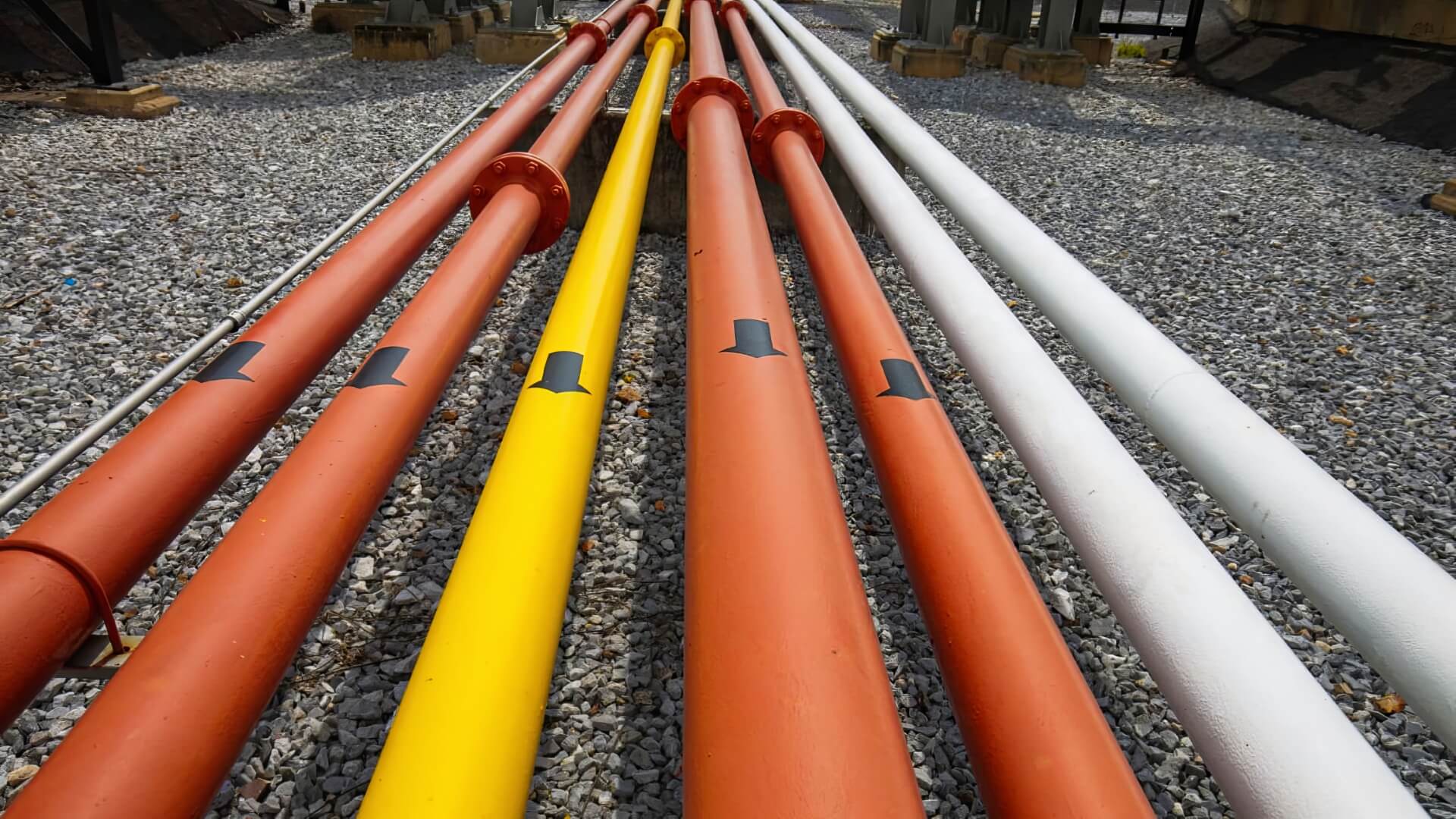Early Open Drainage Ditches in Ancient Civilizations
Some of the earliest examples of drainage systems used by ancient civilizations were very simple open channels or ditches dug into the ground to carry away excess water.
Most were made from compacted earth and had gentle slopes to allow water to flow. These early drainage ditches helped prevent flooding of fields, homes and streets by diverting water to rivers or reservoirs.
One of the first sophisticated drainage systems was developed during the Indus Valley Civilisation between 3000-1500 BC. Located in modern day Pakistan and northwest India, they constructed elaborate public baths and used baked clay pipes in houses to remove wastewater. Outside, open channels lined with bricks directed stormwater and sewage away from cities.
In ancient Mesopotamia, covered drains made from stone and terracotta were built under the streets of cities like Sumer as early as 4000 BC. Egyptians also dug channels to irrigate crops and control the Nile River’s seasonal floods around 3100 BC. Though simple, these initial drainage ditches were an important first step in managing wastewater.
Development of Underground Sewers in Urban Areas
As cities grew more populated in the 18th and 19th centuries, it became clear that open drainage systems were no longer effective or sanitary. Underground sewer systems were introduced to properly collect and transport human waste and stormwater away from busy city streets.
In the mid-1800s, London was plagued by repeated cholera outbreaks believed to be caused by unsanitary conditions and contaminated water. The project took over a decade, but resulted in a sewer system that dramatically improved public health.
In response, the city authorised a major engineering project headed by Joseph Bazalgette to construct an extensive network of underground sewer pipes to replace outdated cesspools.
Other major cities soon followed.
Paris completed its underground sewage system in the late 1800s, while cities like Chicago and Boston also invested heavily in underground sewage and wastewater management. The sewers used durable materials like brick, stone, cast iron and concrete and were typically buried deep enough to use gravity to move waste and water.
The development of underground sewer systems helped control disease, reduced foul odours and pollution associated with open sewage, and accommodated growing urban populations. They remain the standard today, though increasing wastewater volumes continue to pressure cities to expand and upgrade their sewer networks.
Use of Clay Pipes and Channels
Clay pipes and drainage channels have been an effective component of drainage systems for centuries thanks to the durability and longevity of baked clay. The Romans used clay pipes extensively, and segments of these terra cotta pipes still remain functional today after 2,000 years underground.
Clay’s impermeability makes it ideal for transporting water and waste without contamination or leaks. Clay also withstands corrosion, abrasion and high temperatures well. While vitrified clay pipes are more expensive upfront than concrete or plastic, they require less maintenance and last longer.
Small diameter clay pipes are used for plumbing drain lines, while larger diameters work for underground storm sewers and culverts. Clay channels continue to be used for sustainable urban drainage systems. Their flexibility and modular nature allows custom configurations to fit site conditions.
Overall, clay pipes and drainage channels stand the test of time. Cities around the world still rely on clay pipes installed generations ago to function smoothly beneath their streets. Clay’s inherent advantages make it a sound, reliable choice for drainage system components.
Building Sewers to Improve Sanitation
The development of underground sewer systems in urban areas during the 19th century led to dramatic improvements in sanitation and public health. Before sewers, cities struggled with filthy living conditions and frequent outbreaks of cholera, typhoid and other infectious diseases caused by contaminated water supplies and improper waste disposal.
Sewer systems provided an underground network to efficiently remove human waste, garbage and other refuse that previously fouled city streets and waterways. This helped isolate and transport germ-ridden sewage away from populated areas to treatment facilities. Cities with sewer systems saw decreased cases of water-borne illnesses.
Sewer construction also prompted city-wide pipe upgrades that brought running water and basic plumbing into more households. Widespread access to bathrooms, sinks and laundry facilities helped improve hygiene habits. Advanced sanitation enabled cities to grow and thrive.
Today, underground sewer infrastructure continues to play a vital role in safeguarding public health. Modern wastewater management processes ensure that sewage is properly treated before being released, and sewer systems are designed to accommodate growing urban density.
Advancements in Materials for Pipes and Drains
Over time, pipes and drains have been increasingly made from more advanced, durable materials. Following early use of clay or stone, cast iron pipes became popular in the late 1700s. Durable and affordable, iron largely replaced stone and ceramic by the mid-1800s.
Concrete pipes were first manufactured in the late 1800s and quickly gained prominence in sewer systems due to their strength, corrosion resistance and tight sealing abilities. Concrete allowed for larger pipe diameters to meet growing capacity needs.
By the early 1900s, iron’s tendency to rust led to the introduction of galvanised steel, which offered superior longevity. PVC plastic pipes followed in the 1950s as a lightweight, flexible and chemical-resistant alternative. High-density polyethylene pipes are a newer plastic option engineered to be abrasion and crack resistant.
Today’s sewer and drainage systems utilise the most advanced engineering to determine the best pipe materials for each environment. Professional-grade materials deliver optimal durability and performance while keeping infrastructure costs in check.
Transition to Concrete and Metal Pipes
In the early 20th century, urban planners increasingly turned to more durable concrete and metal pipes when designing and upgrading underground drainage systems. After relying on clay, brick, or stone for centuries, engineers recognised that modern cities needed stronger materials to withstand growing volumes of wastewater and stormwater.
The strength and sealing properties of concrete made it an ideal replacement material for constructing large-diameter sewer and storm drain mains. Concrete pipes proved more resilient against corrosion and abrasion compared to ageing brick or iron networks. Their smooth inner walls and joints also allowed faster wastewater conveyance.
Around the same time, galvanised steel and cast iron emerged as longer-lasting alternatives to standard iron pipes in drainage applications both underground and within buildings. Metal was seen as better equipped to handle pressure fluctuations, temperature extremes, and contact with sewage gases.
By the 1950s, most municipal sewer and stormwater infrastructure relied on either concrete or metal piping. Durable concrete and steel dramatically extended the lifespans of urban drainage systems compared to previous materials. They underpin many of the wastewater and stormwater management utilities we depend on today.
Larger and More Durable Drainage with New Materials
Historically, drainage systems were limited by the strength and durability of materials like clay or brick. But new materials developed in the 20th century such as reinforced concrete and durable plastics overcame these limitations, allowing the construction of much larger and resilient drainage systems.
Reinforced concrete pipes offered high compressive strength plus corrosion and abrasion resistance, enabling the development of large-diameter storm drains and sewer pipes. These could handle greater volumes of wastewater and stormwater in growing urban areas. Durable concrete pipes also had tight joints and smooth interiors that improved flow.
High-density polyethylene plastic pipes brought flexibility, chemical resistance, light weight and high impact strength. This allowed for cost-effective, easy-to-install drains. New joining methods like electrofusion welding created leak-proof plastic pipe systems that were both strong and non-corrosive.
Thanks to advanced materials, components like wide drainage culverts, deep sewer tunnels and large-capacity pump stations could be built to create integrated drainage networks with ample capacity. These durable systems withstand pressure fluctuations, temperature extremes and exposure to sewage while lasting for generations.
Treatment Plants and Large Scale Sewer Systems
As cities continued expanding in the 20th century, it became clear that small-scale sewage management systems were no longer sufficient. This drove the development of large-scale municipal wastewater treatment plants, along with extensive sewer networks to collect and transport huge volumes of sewage.
Early sewage treatment facilities used basic physical processes like screening and sedimentation. But by the 1950s, biological treatment methods were introduced to break down organic matter and remove harmful bacteria before discharging treated water.
Modern facilities are even more advanced, using multiple stages – like activated sludge processing, clarification, filtration and UV disinfection – to thoroughly clean wastewater. Computerised systems monitor water quality and allow optimised plant operations.
Massive tunnels and storage tanks are now constructed to capture overflow during heavy rains and prevent sewage discharge into waterways. Overall, these major investments in infrastructure and technology ensure our sewage is properly processed to protect both public health and the environment as cities grow.
Managing Waste as Cities Grew
As urban populations grew rapidly from the mid-19th to early-20th century, cities struggled to manage the corresponding rise in waste and sewage. Existing cesspool-reliant systems were insufficient. Human waste, food scraps and industrial refuse overflowed into streets and waterways, posing a public health crisis.
In response, municipal governments began developing wastewater infrastructure and formalised waste management programmes. New networks of underground sewer pipes were constructed to efficiently transport waste away from populated areas. The first primitive sewage treatment plants were established to begin processing waste before disposal.
City-run trash collection services were rolled out to prevent garbage accumulation. While early landfills lacked modern safeguards, they enabled consolidated waste disposal rather than haphazard dumping. Some cities also built incinerators to reduce waste volumes.
As cities continued expanding, these systems were scaled up by engineering larger sewage networks, pumping stations and treatment plants that could handle greater capacities. Technology also improved disposal methods and made waste processing and sanitation more effective. Though constant upgrades are still required, cities now have robust systems for managing high volumes of waste.
Reducing Environmental Impacts
In recent decades, efforts have intensified to reduce the environmental impact of drainage systems and stormwater runoff. Best practises now focus on sustainability through conserving water, enhancing natural drainage, and improving stormwater treatment.
Low impact development (LID) integrates green infrastructure like rain gardens, bioswales, wetlands, and permeable pavement into drainage plans. These features capture stormwater near the source and filter out pollutants as water recharges groundwater or flows slowly into drainage systems.
New stormwater management guidelines also promote on-site detention and retention through rainwater tanks and detention basins to reduce downstream erosion and flooding. Treatment requirements have increased too – methods like oil/water separators, bioretention filters, and constructed wetlands help remove sediments, heavy metals, and other contaminants.
Other innovative solutions include smart monitoring to optimise water recycling, leveraging natural drainage corridors, and integrating drainage with green public spaces. With climate change projected to increase extreme weather events, building adaptable, sustainable drainage systems is an urgent priority worldwide.






